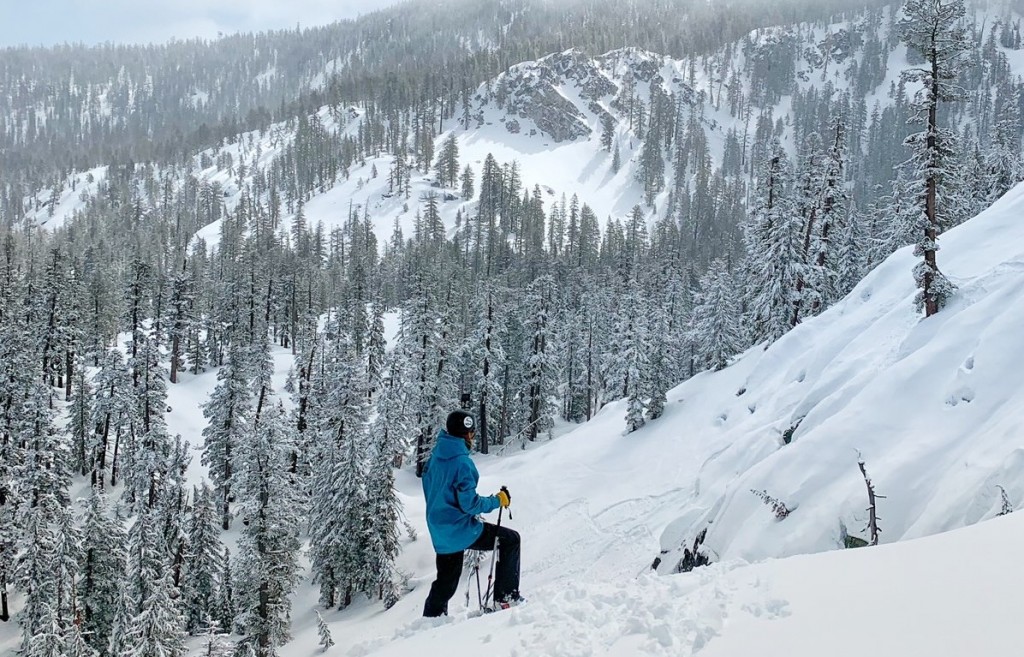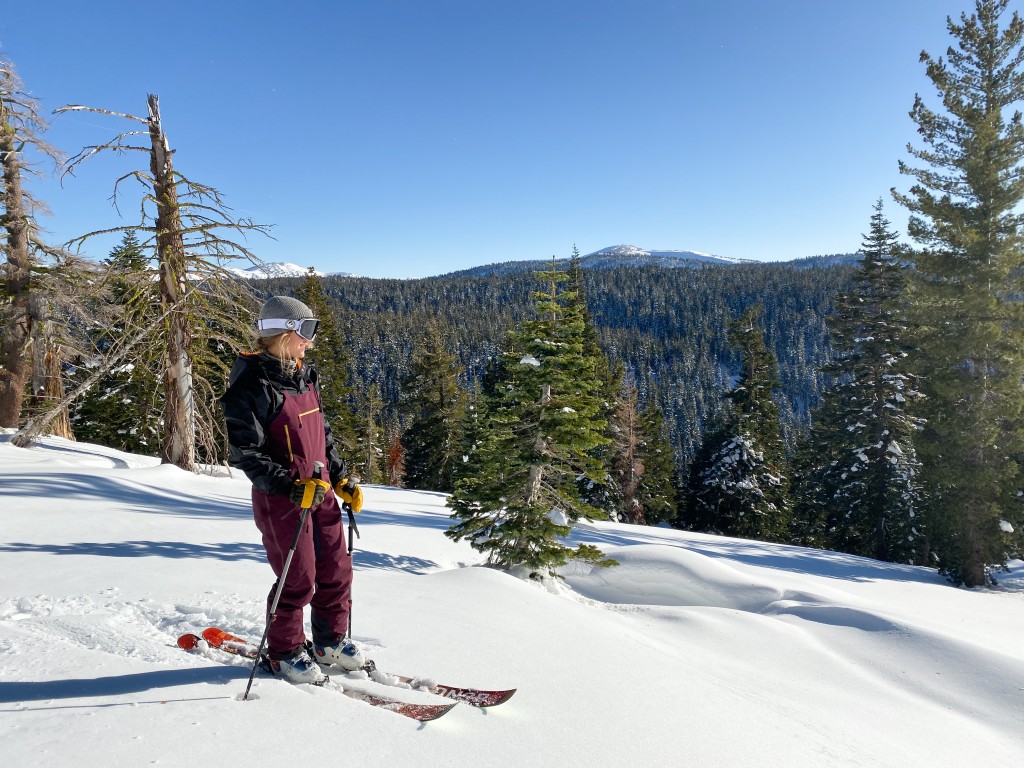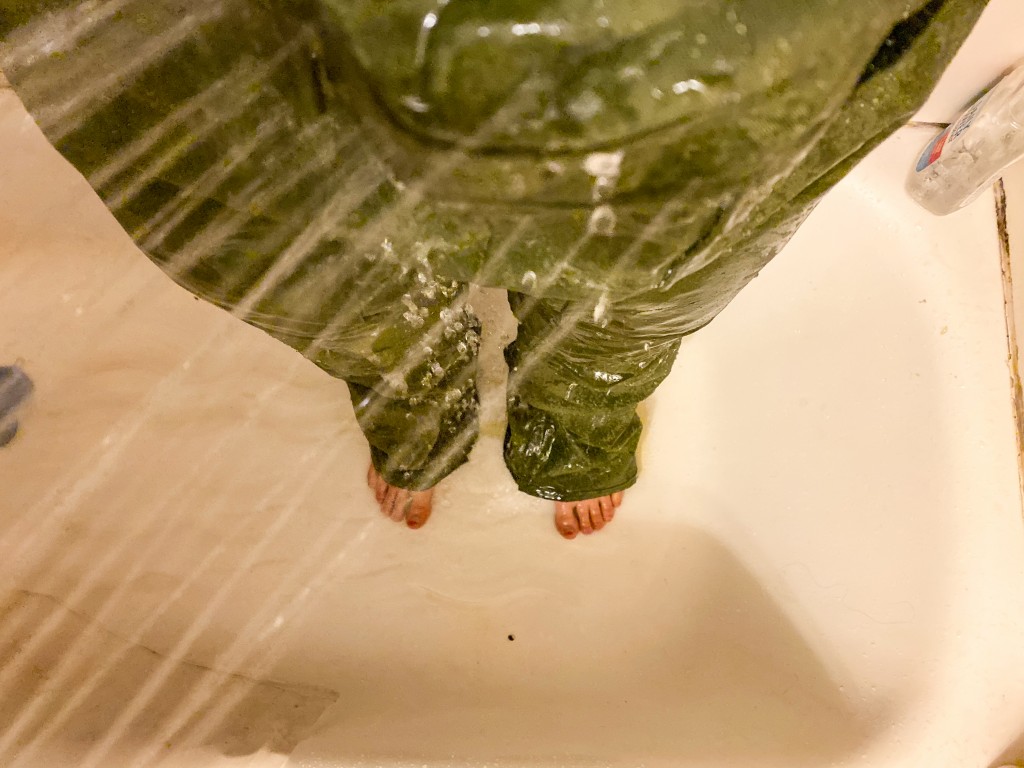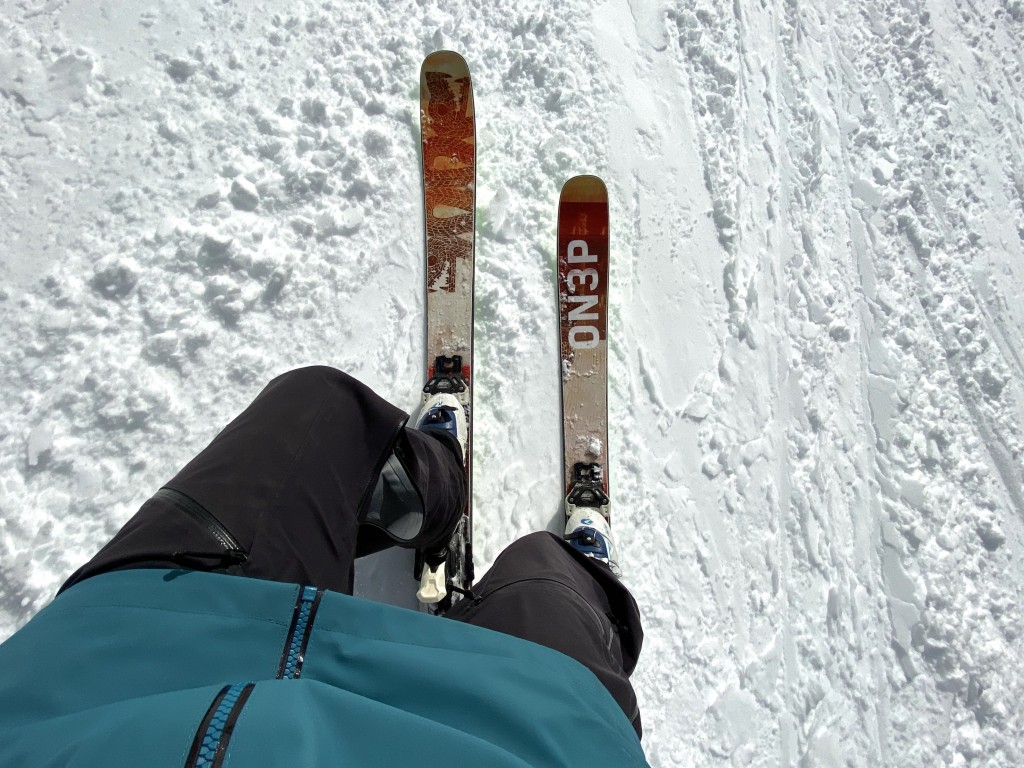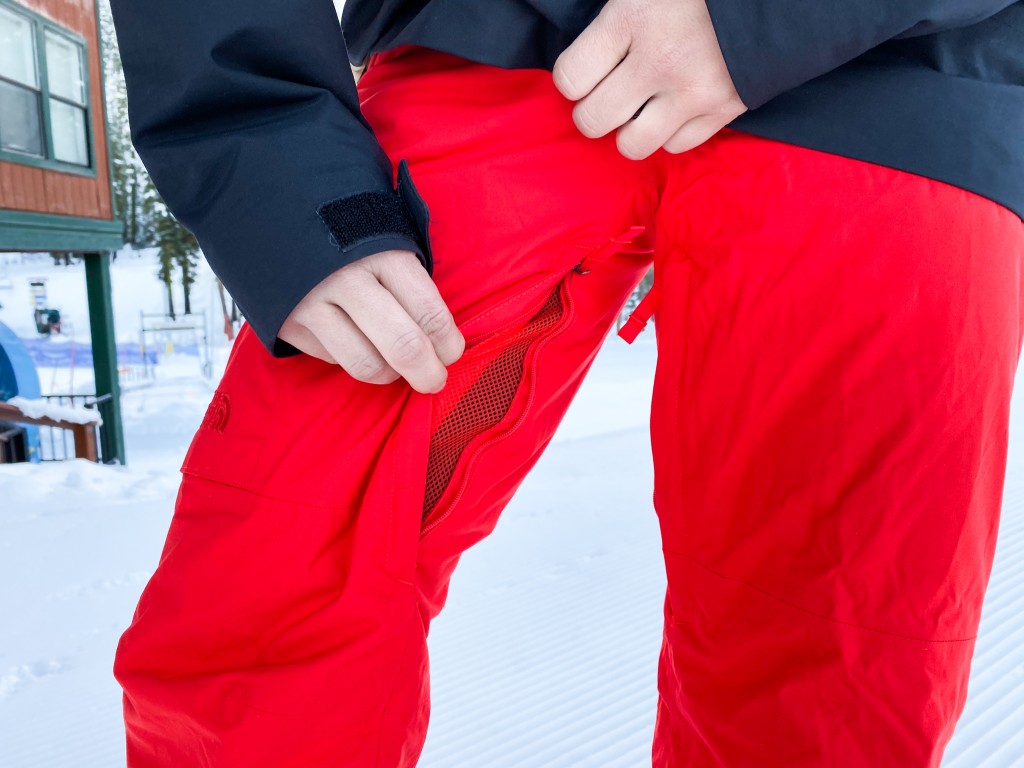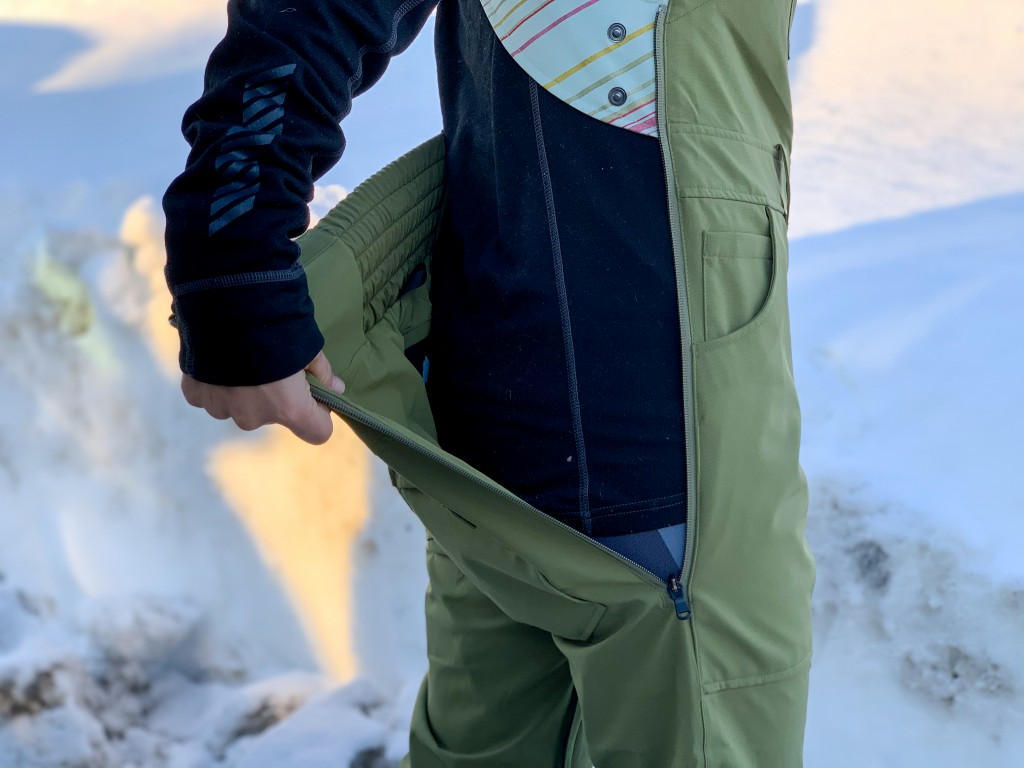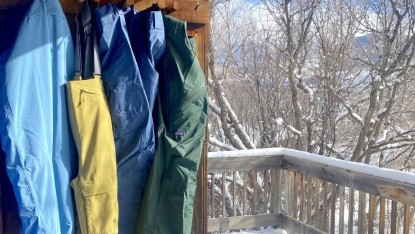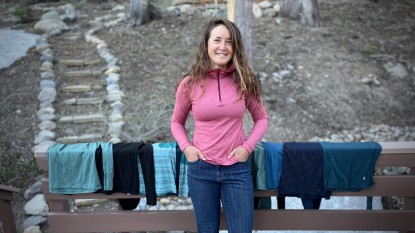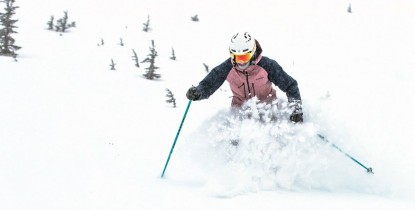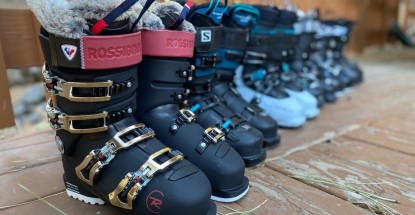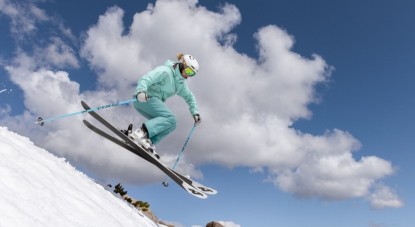While ski pants may not seem like the flashiest or most exciting piece of gear, they are one that's important to have a fantastic day skiing or riding. Having the right pair of pants that fit your needs can make or break your experience on the mountain. If you're one to charge bell to bell, you need a durable pant that can handle varying conditions. If you're just getting started, you require leg coverage to keep you warm and comfortable while you learn without paying a large sum. If you're an avid backcountry skier, you want a technical pair that can keep up with you, regulate your temperature, and help manage your gear.
With so many options on the market, buying the right pair of ski pants can seem daunting. Should you get an insulated pant or a shell? Why might you choose a bib over pants? What the heck do all of those waterproofing metrics mean? If you're unsure what to consider or look for when buying a pair of ski pants, fret no more. You've got us on your side now, and we are here to answer those questions and more.
We don't distinguish between the two. If you can use them for one, you can usually use them for the other. The defining difference is usually a scuff-guard on the instep of ski pants to protect them from ski edges. The cuff does not hurt for snowboarders to have, and skiers will benefit from these as their pants typically last longer.
Types of Ski Pants
Insulated Pants
Due to their construction, insulated ski pants perform a pretty specific function: they collect heat around your legs to keep you warm when temperatures drop. When looking at insulated pants, you may notice that different companies label their insulation materials or systems differently. Don't let that confuse you: these are each typically measured in grams, and the more grams of insulation inside the pant, the warmer you can generally expect them to be.
If you are someone who gets cold quickly, doesn't plan on highly exerting oneself, or know that you will be facing really cold temperatures, an insulated pant might be for you. If you are someone who gets warm quickly, plans on hiking or ski touring, or prefers to self-regulate body temp by layering underneath, consider non-insulated pants.
Non-Insulated Pants
Non-insulated pants, or shells as they are also known, are a popular alternative to insulated pants. Shells excel during high-output activities, such as hiking to in-bound sections of the resort, skiing moguls, and backcountry skiing uphill. These shells typically have a waterproof and breathable membrane layered underneath the exterior fabric that keeps external moisture out and resists moisture build-up from sweat internally. Shell pants often have long zippered vents, too, which significantly help shed heat while performing strenuous activities. They are also great for skiers and riders who prefer to layer under their pants to most effectively regulate their temperature throughout the day. Shells are typically more versatile and technical in function.
Bibs
After a long hiatus, bibs have made a comeback in ski fashion, and for great reason. Not only do they help keep snow from getting in your pants, but they also can help you customize your fit, tend to have more pockets, and keep your pants from falling down. Plus, many bibs now come with women-specific drop seats to enable you to use the restroom without having to shed your layers—a major downfall for bibs from the past.
Bibs are typically more expensive than pants, depending on the construction, but can be worth it if you are ready to make the investment. If you are someone who knows that having straps over your shoulders will bother you, bibs might not be for you.
Ski Touring Pants
If you want a pair of pants for the backcountry, consider if you prefer to wear your beacon strapped across your chest or need a pocket that can carry it (which we discuss in features) and what kind of fit you prefer (fitted, relaxed, bibs, or pants). Pants designed specifically for ski touring are typically top of the line for breathability, waterproofing, and backcountry-specific features while weighing as little as possible. They are usually 2 or 3-layer shells designed to allow the wearer to shed heat quickly via venting, sometimes have pocket space to hold necessary tools like avalanche beacons, and are constructed with weatherproof materials. Because of this, they are also often more expensive than other pants.
If you do not ski tour but spend a lot of time skiing, you still might want to buy a pair of backcountry designed pants thanks to their aforementioned technical features, but for the everyday resort skier, you can probably find value in something less technical at a lower price.
How to Choose
Now that you know the basics, we can delve into other factors that differentiate pants from one another. We are going to cover weather resistance, materials, venting, comfort and fit, and features. Each of these categories should come together to help you find the right pair of ski pants for your needs.
Weather Resistance
The last thing you want while skiing up a storm is for your gear to give in to the elements by letting in water or wind. That's why weather resistance is an important metric to keep in mind, especially if you plan on venturing outside on inclement days. There are a few pant material and construction factors that affect a pant's waterproofing, with two-layer, three-layer, and Durable Water Repellant (DWR) materials being the most common.
Two-layer material is constructed of a face fabric (the outer fabric) with a waterproof membrane laminated to it to help keep you dry. This is usually paired with a loose hanging liner that helps protect the membrane from wear and tear. This layering system is why some pants may absorb water on the outside, but the water may not reach your skin. It is frequently used for insulated pants, as well as less-technical, resort-focused pants.
A three-layer material is similar in the first two layers but has a third layer attached, sandwiching the waterproof membrane between it. This added layer serves a similar purpose to the loose liner of a two-layer pant, which is to protect the waterproofing from deterioration but is combined to appear like a single fabric and is typically higher performing. This material is used in the majority of backcountry and other technical pants.
Finally, DWR is a layer of repellant (Durable Water Repellant) that can be applied to almost any material, two-layer or three. This is a coating that is almost painted on and helps pants shed waterdrops without absorbing them. This layer tends to deteriorate with use and time but can be re-applied at home. DWR keeps the outer fabric of your pants from wetting out and becoming saturated and, therefore, heavier. A higher-quality DWR coating will last longer than those of inferior quality.
Waterproofing and Breathability Ratings
One of the more confusing metrics to understand when buying a pant can be the waterproofing and breathability ratings. These are typically in number form and look something like 10k/10k or 20,000mm/20,000mm. If these seem confusing to you, read on as we explain all you need to know.
If a material claims to have 20,000mm of waterproofing, that means that during testing, a 20,000mm (or 20 meter) column of water was able to be suspended over one square inch of the fabric before it started leaking. Anything rated to over 10,000mm (10 meters) is considered waterproof. If you live in a wetter region, like the Pacific Northwest, you want to look at products in the 20k zone. Those living in areas with dryer snow can typically get away with pants that have lower ratings. Also, keep in mind that some companies, like Gore-Tex, don't publish these numbers. Regular Gore-Tex is widely trusted for its waterproofing prowess.
Breathability ratings state how many grams of water vapor can pass through a square meter of fabric (g/m2) in 24 hours. This matters for those who run warm or anticipate working up a sweat while wearing their pants. Ratings range from 5,000 g/m2 to 20,000, with higher numbers again signifying higher performance. A rating of 5,000 g/m2 is appropriate for most resort riding, but we recommend something closer to 15,000 to 20,000 g/m2 for those looking to get into the backcountry or larger, hike-to, strenuous inbounds lines.
Venting
Vents are typically found on the inner and outer parts of the upper ski pant and are key to regulating one's temperature. Nearly all ski pants worth considering come with some kind of venting, which allows for a more versatile pant.
Most insulated pants will only come with two, typically small leg vents, which help you cool off when the insulation becomes too much. However, due to their design being centered around warmth, this doesn't always provide enough cooling, and we recommend wearing other pants on warm days.
Many uninsulated pants, especially those designed for ski touring, feature larger venting, whether it is inside the thigh, outside the thigh, or both. Bibs, especially, tend to offer more venting options as drop seats can be multifunctional and allow additional ventilation.
Some pants come with an inner mesh lining on vents. This comes down to personal preference. The mesh helps keep snow from getting inside of your pant and can provide additional modesty if no layers are worn underneath, but also limits how much the vent can open, plus can get caught in the zipper.
Comfort and Fit
The last thing you want when heading to the slopes is to feel uncomfortable in your pants. And while fit can be hard to nail if you aren't able to try on a pant in person, here are a couple of things to consider.
This category comes down to personal preference, as well as the sizing chart of each company. Some pants offer sizing in short, regular, and tall, which can help you ensure that you have the right length in your pant. Additionally, most bibs have adjustable straps, which can be more forgiving when it comes to length or waist size. We also appreciate Velcro adjustments along the waistbands to help fine-tune the fit and potentially forego wearing a belt on the ski hill.
If you plan on layering underneath your pants, you will want to size them appropriately so you can comfortably wear those additional layers. Also, those who wear a knee brace will want to go for a baggier fit. And for backcountry skiers, purchasing a stiff, rigid pair of ski pants won't provide the mobility you may require. We highly recommend looking at the size chart for each pair of pants as sizes can vary greatly between different companies, and sometimes within, to ensure you're getting the best fit.
Features
Features can make a great pant amazing, or an awesome pant just okay. They are the little things that set each pair apart, catering to the individual needs we all have. Features to consider:
- Pockets—just as many a favorite dress comes equipped with pockets, having the right pockets on your pants matters, too. Pockets in ski pants are typically larger than those in regular pants, and a good pair can usually fit your phone, wallet, keys, and some snacks you're your thigh pockets, alone. Some bibs come with chest pockets (our favorite is the kangaroo pocket), adding additional space. Others come with specially designed pockets for things like beacons, your keys and wallet, and more.
- Drop seats—most bibs these days come equipped with a drop seat to make going to the restroom an easier experience. If you are a person who steers towards bibs, make your life easier, and go for a pair that features this.
- RECCO—many ski pants come featured with RECCO Technology, specifically all of Patagonia's line. RECCO is a chapstick sized device that is embedded into the pant material that can be used by a RECCO equipped ski patrol or search and rescue team to help locate you. It is not an adequate replacement for a beacon should you venture into the backcountry (by any means!), but it is certainly nice to have in a world where you can never be too prepared.
- Random but cool—some pants now come with an insert in their boot gaiter to fit a ski boot strap to make adjustments easier.
Conclusion
We hope that the above information has armed you with the knowledge and technical prowess to make the right decision on what pants may suit your needs this winter. Whether it's a less technical, insulated pant for your first day on the mountain, or a three-layer Gore-Tex shell with all of the bells and whistles, we want you to feel good about your decision.


